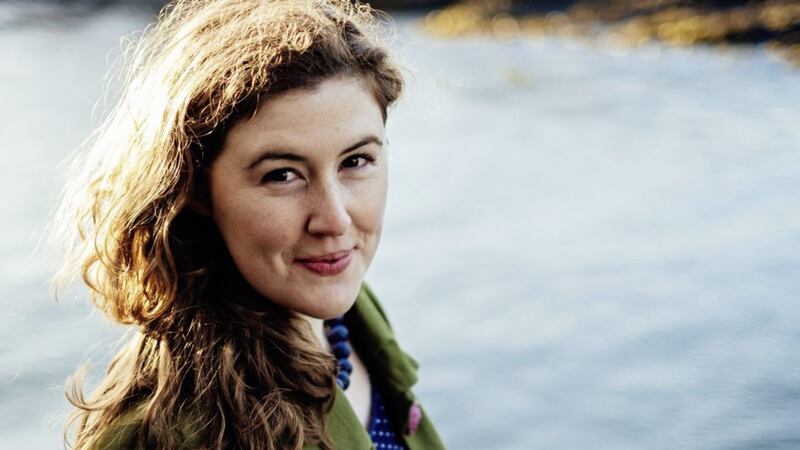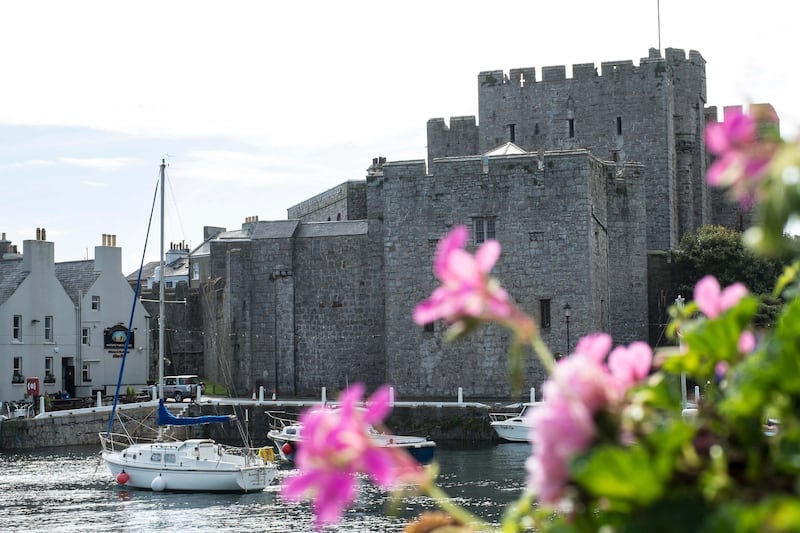ONE of the most intruiguing concerts I’ve been to in recent years was one given by a trio called Aon Teanga – Un Çhengey (One Language), a combination of Scottish Gaelic singer Mary Ann Kennedy, Irish singer Eoghan Ó Ceannabháin and Ruth Keggin singing in Manx.
Manx or Mannanais, a language which lost its last native speaker in 1974, is perhaps the little sister of the Irish and Scottish versions of Gaelic, but like Irish, Mannanais has been going through a strong revival over the past 20 years and it even has its own bunscoil/primary school with 71 pupils being taught through the medium of Manx.
Culturally, the language is also thriving and one of its best amassadors is Ruth Keggin who is a wonderful singer and collector of songs in the three Gaelic dialects and in English. She has also been described as a “language activitist” – so what does that mean, I asked her this week.
“I’m not entirely sure myself – that’s Wikipedia for you!” she laughs. “However, although I’ve never self-identified as an activitist, I’m passionate about the Isle of Man and its culture, heritage, music and language in particular, and am always keen to share these things with people.”
Although Ruth’s mum sang in a couple of community choirs, her dad doesn’t sing or play, although he has always loved listening to a wide variety of music, including a good deal of trad and folk music, Ruth grew up with music reverberating around the house in one way or another.
“I always remember the first tape my dad gave me as a present: the album Venus in Tweeds by the Scottish band Shooglenifty, who remain one of my favourite bands to this day. My 90-year-old grandma loves her music too – she’s one of the oldest church organists on the Isle of Man now,” the 27-year old told me.
Ruth knew every early on – even before she’d learnt to play any instruments – that she wanted to be a musician when she grew up.
“I used to pick out melodies on the piano, and sing all the time. I was also desperate to learn the flute and begged for lessons when I was about 10. At the time when I was growing up, you could learn an instrument for free through the Isle of Man’s music service (we have our own government over here) and this nurtured generations of brilliant musicians coming up through the ranks.
“Of course, governmental cuts have meant that free music lessons were one of the first things to go, but the island still has a very good music scene. We had great youth orchestras and choirs, and I was lucky that my state secondary school had some dedicated music teachers who supported me in my dream of studying and making a career in music before I went on to study at the University of York.”
I presume the subject matter of Manx songs is the same as everywhere else in the world – love, emigration, work and so on – but are there any particularly Manx themes?
“Many of the themes in Manx songs are certainly universal – and some themes, like love and loss, transcend generations; I’ve found that people can connect with these sorts of songs no matter where they live in the world.
“There are also most definitely songs with particularly Manx themes – there are many that reference place names on the island, legendary characters and superstitions, historic figures, and events that have occured,” she explains
“A couple of years ago, I wrote new music for a few verses of a very long poem in Manx, which is several centuries old, called The Traditionary Ballad: it references the sea god Manannan Mac Lir (whom you will know in Ireland) and his role in protecting and guarding the island. Even today, Manannan is a very well-known legendary figure here on the island.”
Ruth has a new album out at the minute, Turrys, meaning journey which I must say is as good as anything in coming out of Scotland or Ireland. What did Ruth hope to achieve with the album?
“I think Turrys is, in some ways, a bit more adventurous than my first album… perhaps that was a subconscious reason for giving it the name that I did,” she said. “There was two and a half years between writing and recording Sheear, and writing and recording Turrys, and my band and I have grown a lot musically since then, and wanted to try out some new ideas.
“There are a few more upbeat, catchy and quirky riffs on this album, and some faster instrumental sets, as well as a song or two to surprise the listener: a Manx Gaelic version of the Runrig song Chi mi’n Geamhradh, and a mash-up of a well-known Manx traditional song Ushag Veg Ruy and a traditional American ballad In the Pines, the latter of which was covered by Nirvana in the 1990s.
“I had a lot of fun exploring different vocal colours and tones in this album and I hope our enjoyment of playing and singing comes across.”
As well as making music, Ruth is looking forward teaching Manx. She has also dipped her toe into some presenting work for BBC 2’s Coast programme when she did a short feature for them about Manannan and loved the experience.
“Hopefully I’ll have a bit of time for some songwriting too as I’ve some quirky ideas that I’d like to explore further. I’m always keen to collaborate with new people too so hopefully some more projects will come together in 2017.”
:: You can find out more about Ruth at ruthkeggin.com








